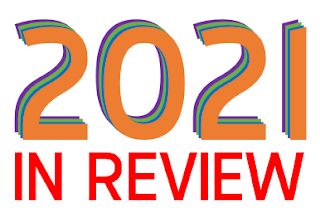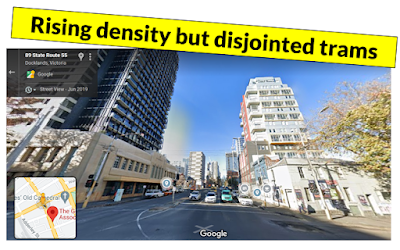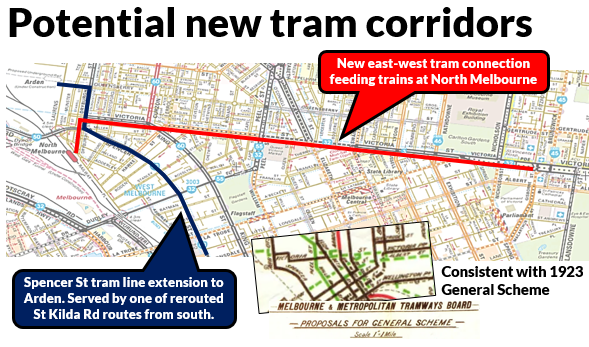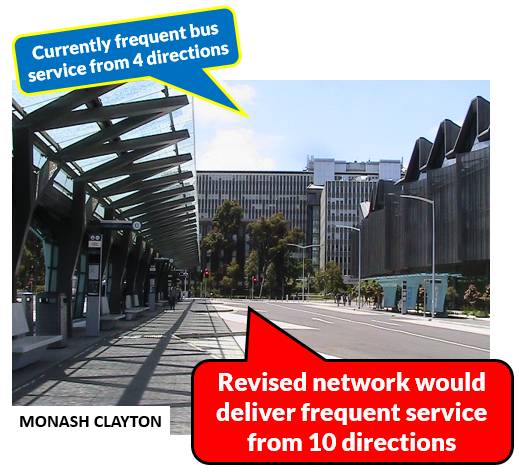2021 turned out much more like 2020 than most people imagined (or hoped) at the start of the year. In other words it was defined by coronavirus and our reaction to it.
However for the topics discussed on this blog, I think 2021 turned out better than expected.
Indeed by some measures it was the best year of at least the last five and one of the more significant in the last ten.
I say this for two reasons.
Firstly Melbourne and Victoria was able to maintain its public transport service levels. Many cities internationally could not and cut back timetables due to funding arrangements and massive driver staff shortages. We were possibly also saved by our inflexible and unresponsive internal processes for changing timetables that work against optimising services under other circumstances. Replace the negative 'inflexible' with the positive 'resilient' for an assessment of how our services fared. Although seeing all those super-frequent peak trains with few riders would have flustered the efficiency minded.
Secondly there were the green shoots of service reform across all modes. Whether it be trains last summer, some buses in spring and the 82 tram a few weeks ago. Good things on the service side are being done after a period where 99% of attention and funding was on 'Big Build' infrastructure projects.
January 2021's train timetable changes finally delivered 2012-planned reforms that were going to happen in 2015 on the Werribee, Williamstown and Frankston line. These included slashing maximum waits from 30 - 40 minutes to 20 minutes 7 days per week and providing a consistent 7-day cross-city routing pattern. Altona and Williamstown got their peak trains restored to every 20 minutes from every 22 minutes - a small but worthwhile boost that makes their timetables easier to remember.
One of the most confusing parts of our rail network, the City Loop, became less so with Dandenong trains approaching it in a consistent direction all week with no midday reversal. With the Clifton Hill group reformed about 10 years ago, this leaves two out of the four Loop portals to tidy up.
The other big beneficiary was the Ballarat line. It got weekday trains every 40 minutes to Ballarat with even larger weekday boost for suburban stations like Ardeer, Deer Park, Caroline Springs and Melton.
An issue highlighted back in January and recurring all year, was that when confronted with a substantial service boost DoT/PTV rarely knows what to do with it. Their style is more like "timetables have changed - use the journey planner to plan your trip" rather than to actively sell passenger benefits like more consistent services, reduced waiting and even more distance from other passengers. Then when improved timetables come into effect PTV may drop the ball and get everything wrong anyway.
This is important because if you want continued reformed services you want more people using those you've just improved. And even from a political point of view, accurate information, not misleading passengers and better than mediocre marketing would especially not go astray in 2022, an election year.
May saw the 2021 Victorian State Budget. It had more for bus upgrades than the 2020 budget. We'll see the effects of this boost in the next couple of years when improved services commence in the Yarra Valley and Broadmeadows areas. Yarra Valley needs reform for reasons explained here while, near Broadmeadows, places like residential Campbellfield hasn't seen bus improvements for decades. Other improvements were budgeted for growth areas like Clyde and Tarneit and the redevelopment area of Fishermans Bend.
The extent to which this could be so seems to depend on the Minister. The Coalition government and Minister Mulder didn't put in much new money for buses but did back reform. In contrast the following Labor government, and especially its minister Jacinta Allan, enthusiastically built infrastructure but resisted potentially controversial rail timetable and bus network reforms. Minister Horne, who followed in public transport, was too junior and short-lived to captain a discernible change of tack. That job was to fall to Minister Carroll who has been able to do so without the benefit of much extra funding (yet). This is an example of the role serendipity can play in politics as Minister Carroll only picked up transport due to the reshuffle following last year's Adem Somyurek scandal.
Less than a month after the 2021 State Budget came Victoria's Bus Plan. The most important plan covering buses since Meeting Our Transport Challenges in 2006, this even more emphatically signalled that bus reform was on the agenda. And its basic principles, including support for simpler routes and higher frequencies was encouraging. However being more a 'plan for a plan' it lacked detail on essential matters such as a service hierarchy and network coordination framework. It wasn't backed by much funding but some needed timetable reforms to 19 routes were slated to happen later in the year.
Different views on the plan appear here:
Also out in June was word of a dramatic reform to Night Network buses. This was actually in the works for some time but implementation had been delayed. The idea was that instead of just running Night Network buses on their own special routes, some of these would be replaced by selected regular routes upgraded to operate 24 hours on weekends.
Night Network buses were often poorly used, even before COVID-19. It was hoped that upgraded familiar regular routes would attract higher usage. Very early indications have been positive. Running some regular routes all night would make us more like practice in other Australian cities. Another plus is that some suburban areas that have long been stuck with Saturday and Sunday morning services that start too late would gain earlier trips. The sort of passengers who would use these services are not necessarily Night Network type passengers so for this group having regular routes operate instead would make buses simpler for them. The reformed network started later in 2021.
A worthwhile improvement that should help accountability came in July. From then the public could look up bus punctuality performance for each route. This removes an anomaly where performance information was available online for trains and trams but not buses.
In September I wrote about substantial bus timetable changes to 19 regular routes. I described them as 'smell of oily rag' reforms as busy routes got more trips while quiet routes got fewer. While they were confined to one company's services (Transdev) there are some really good upgrades, including better operating hours and weekend frequency upgrades. A video summary is here.
Again PTV's information and promotion efforts were lackadaisical. This seems to indicate that pro-service and pro-patronage mindsets are not yet universal throughout DoT despite now clear ministerial support for service reform that should generate higher usage.
Infrastructure Victoria brought out its 30 year strategy in August. The state government responded in December with the Victorian Infrastructure Plan. Encouragingly, and of particular interest to us, they supported bus and tram network reform by 2025 to feed and support the Metro Tunnel. My three-part series on what this might (ideally) look like starts here. If the state government carries through with this to the scale it should then many of Melbourne's busiest bus and tram routes will be reformed within four years.
October saw the announcement for the Melbourne Bus Franchise covering most of our longest, most frequent and highest profile bus routes. Incumbent Transdev lost to Kinetic, better known as the operators of Skybus. Transdev Melbourne had smartened their act in the last couple of years but this was not enough to compensate for some torrid years prior. Kinetic will take over next month.
Rounding off 2021 was a tram upgrade. The PTV website item stressed the introduction of E-class roll-out on Route 58 and only casually mentioned timetable changes. However concealed in this was some good news for Route 82 passengers whose weekday interpeak service increased from every 20 to 15 minutes. 82 remains the least frequent 'regular' route on the network but by a much lesser margin than before.
As you have seen service upgrades have spanned metropolitan trains, regional trains, trams and buses in 2021. And we've seen the start of official recognition of the worth of bus network reform, whether it be in budget papers or the Victorian Bus Plan.
If 2021 was the 'year of the plan' will 2022 be the 'action year'? That could include smaller scale 'build back better' upgrades to slash maximum waits at 100 stations and similar timetable reforms to that which we saw for Transdev for other bus operators. Along with funding for larger scale upgrades such as needed to Double Service Frequency On Everything.
Despite high benefit / cost ratios, there's no escaping that substantial service boosts and network reform require an increased call on public funds. Given the size of its budget, it is reasonable for DoT to have to demonstrate it wisely spends what it already gets. In particular it needs to urgently review its business costs and its high executive wages bill. The latter amounted to about $100 million on 400-odd execs, a large rise on 2020. DoT internal change must however (i) not diminish attention on and capacity to deliver network reform and (ii) not be so protracted that it causes an obsession with self to the exclusion of the passenger or user (as has been the case with previous almost continual restructuring).
A previous instance of internal savings being found under the Kennett government during its (pre-franchising) transport reform program led to off-peak suburban train frequency increases on some lines bigger than the 'build back better' upgrades proposed here. If they won't by themselves they should be forced externally to do so we don't miss out on needed service improvements.
The maxim that an organisation's true priorities are set by its budget not by its plans is true. This means that even more important than Victoria's Bus Plan (and all the other plans the Auditor-General found existed) is the contents of the state budget. Particularly 2022's, due out in May, about half way between now and the state election.
Will this budget finally contain the decisive 'swing to service' that we've long hoped for? The answer to this will likely determine how significant 2022 will be for transport.


























